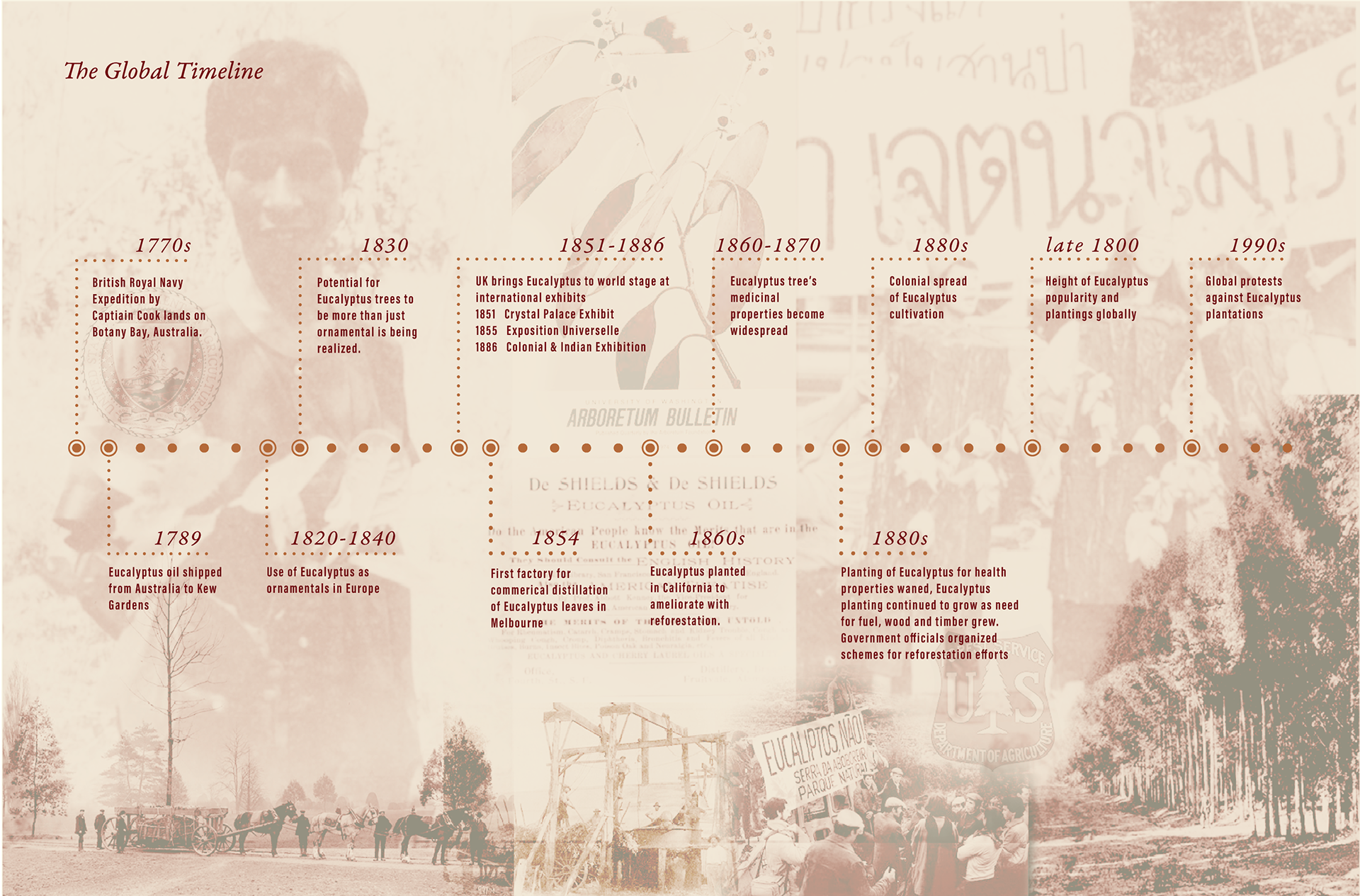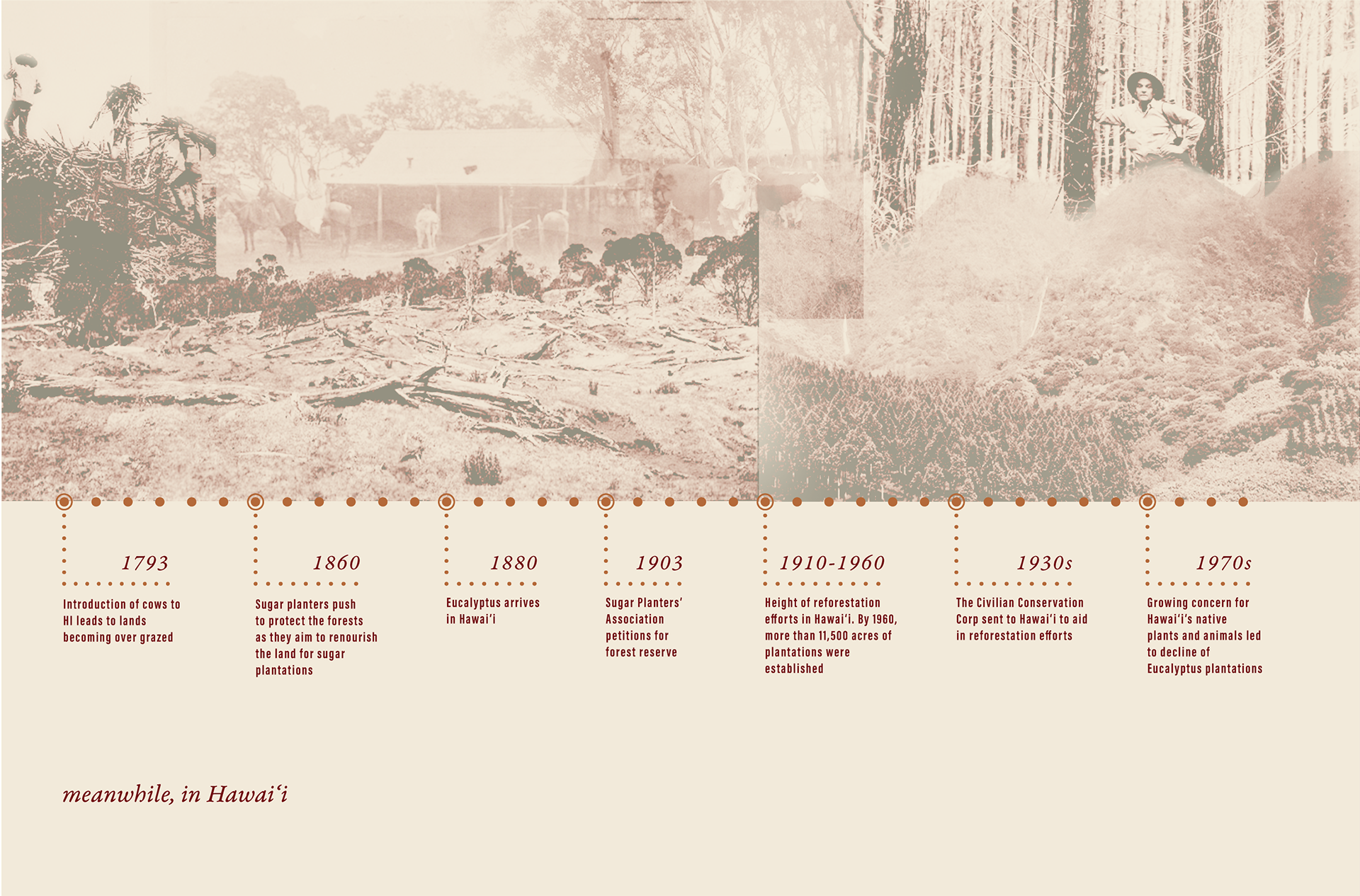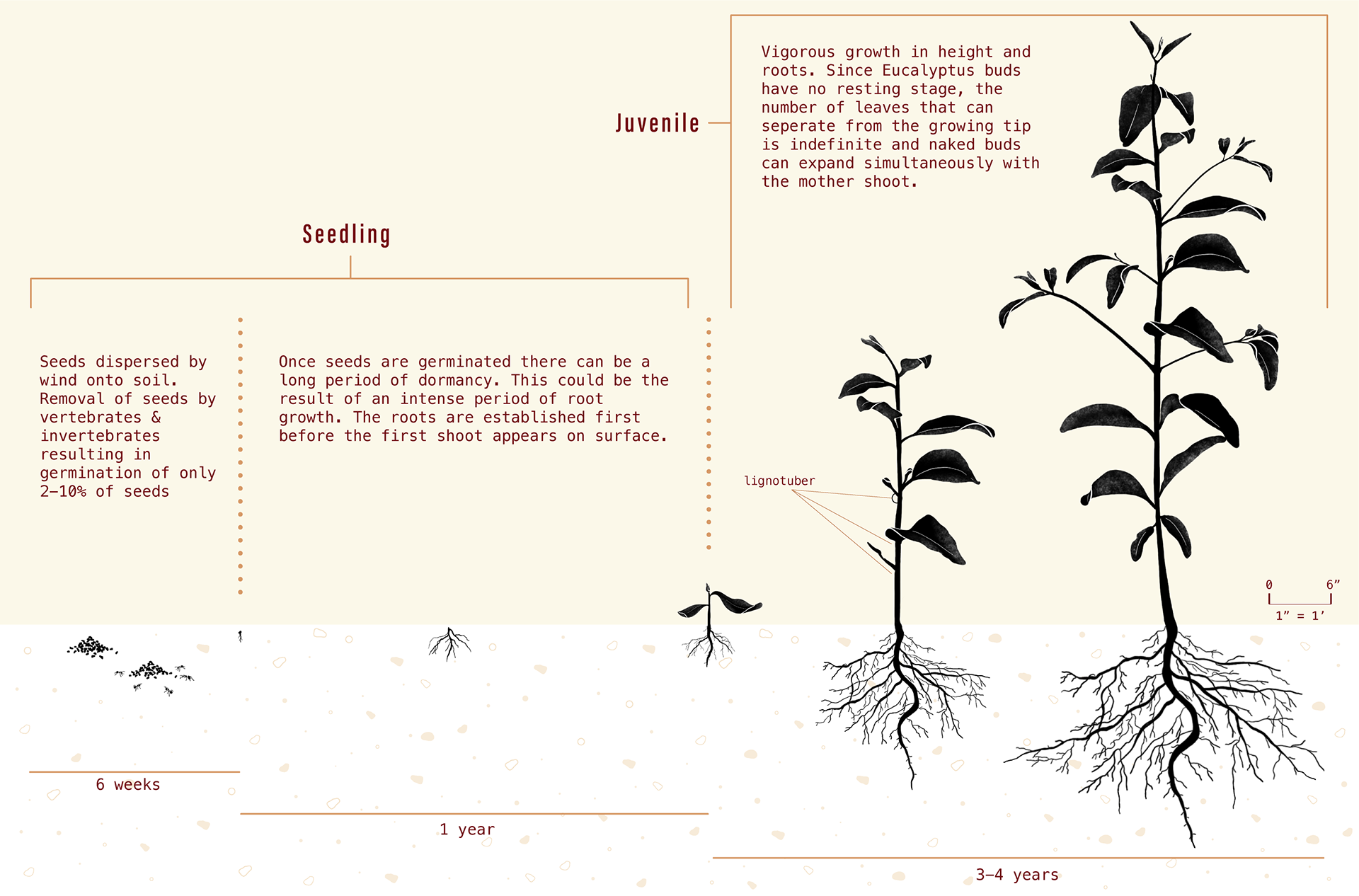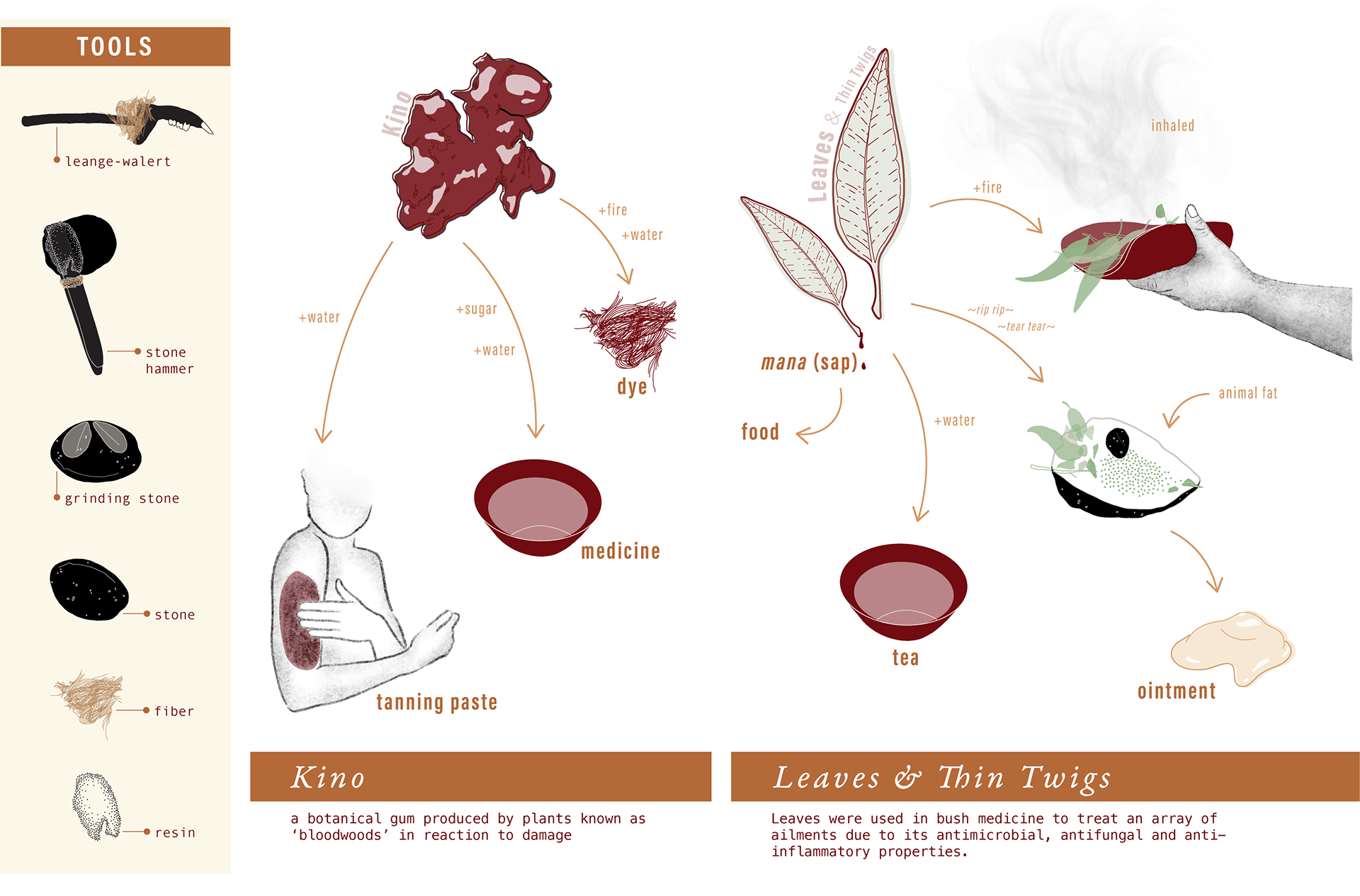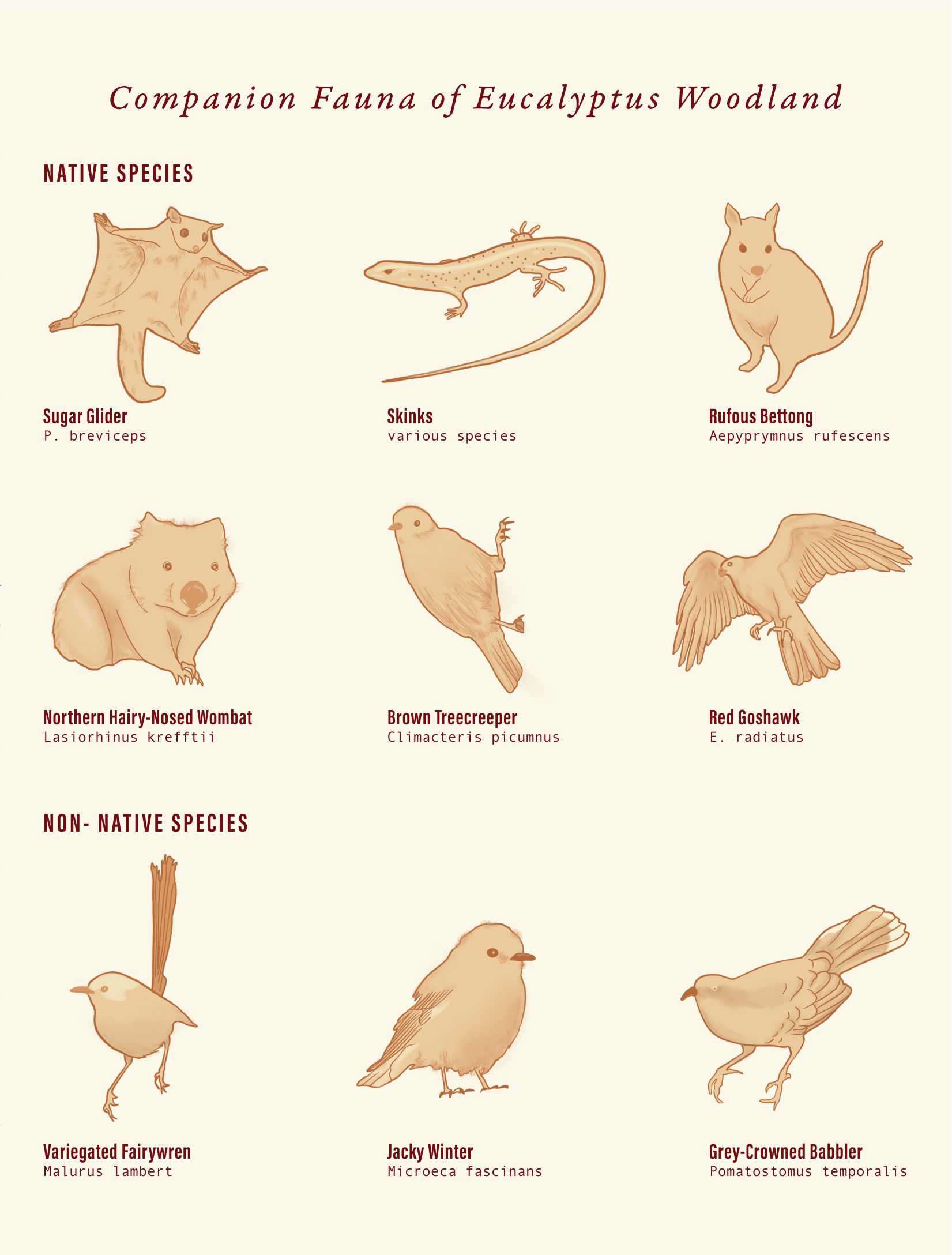Plants are tools that landscape architects wield in designing the landscape. Embedded within each plant is a web of genetic knowledge, ecological function, and socio-cultural significance; characteristics that have been forgotten over the course of time. This course asked each student to investigate a single plant, trace its origin, rediscover its ethnobotanical role, trace its ecological and agricultural roots, and explore traditional forms of management. Using graphics, document and convey the information. Through this rigorous exploration of the plant, a more holistic view emerges. One in which the potential of the plant becomes clearer.
The plant I selected to study was the Eucalyptus tree. Through my close examination of the Eucalyptus tree, I found that:
1. in Australia, Eucalyptus trees grew and adapted to a fire-prone landscape. The seeds, bark and lignotubers of the tree ensure its success in this landscape
2. The assumed “natural” prairie landscape of Australia was indeed managed by aboriginals of the land through cool-burning. This management is the first example of farming.
3. Eucalyptus trees were heavily imported into Hawai’i in the early 1900s as part of the reforestation efforts led by the Sugar Planters’ Association
